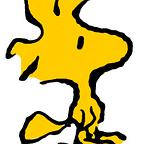‘Suspiria’ Remake is Lush, Ghastly, and Unnecessary
For decades, Dario Argento’s 1977 Suspiria has been one of those classics that comes closer to bridging the gap between die-hard horror fans and cineastes than almost any other movie. The former appreciated its alternately gloomy and shrieky mood, and (literal) stabs of giallo overkill, not to mention impressive bloodletting and that Gotterdammerung climax in which the dance academy hiding the witch coven collapses in fire. The latter liked its uneasy mood, the playful way it toyed with slasher clichés, the haunting soundtrack, and being able to work giallo into a conversation.
Being a late-1970s grindhouse semi-classic from a director whose misses far outnumbered his hits, Suspiria was a far from perfect movie. That doesn’t, however, explain why it needed a second version. Still, interest was piqued — how could it not be, given nearly all-female cast and coming in a time when queasy horror motifs seem to be creeping into mainstream entertainment from all sides. (What is House of Cards but horror by way of Richard III?) Inspection of Luca Guadagnino’s revamp of the original doesn’t provide much of an answer, unless it was to answer the following questions: Can Tilda Swinton play a dance matriarch and diabolical witch? Of course. Can she also convincingly play the 82-year-old male psychotherapist whose subplot takes up far too much of the movie’s running time? Strangely, not quite.
Like before, it’s a story of a starry-eyed young dancer who comes to Germany to work with a legendary company only to find out that there are sinister goings-on behind all the choreography. Susie (Dakota Johnson) is a mousy-seeming thing who arrives from Ohio with stars in her eyes and a possessed demeanor when performing. She catches the eye of the luxuriously grand chain-smoking Madame Blanc — played by Tilda Swinton, whose spacey aristocracy has been channeled by Guadagnino in movie after movie. Inside the walls of the company’s bleak and fortress-like dormitory, the elderly madams put their crop of girls through their paces while wondering whatever became of Patricia (Chloe Grace Moretz), the terrified girl we see in the opening scene telling aged psychiatrist Dr. Josef Klemperer (Swinton again, this under a baggy pile of prosthetics) about the danger she is in.
Unlike the original, this time the Tanz dance company is set in “divided Berlin” (as the portentous opening titles inform us) in 1977 when the Baader-Meinhof gang is running rampant. While the backdrop of terrorism makes for some added frisson on top of the hothouse tensions at the company, it doesn’t much to the story except background noise. As another departure from the Argento template, Guadagnino doesn’t show much interest in reinterpreting the slasher context: so while there is gloom and danger aplenty, nobody is stalking and killing off dancers at reliable intervals.
This isn’t a bad thing, at first. Even compared to Argento’s dread-soaked version, this Suspiria is heavily brooding. That doesn’t result at first in a great deal of bloodshed, excepting a remote death-by-dance sequence involving snapping limbs that could send some viewers diving under their chairs. At first, it is almost as though Guadagnino was in the mood to create a real dance movie. His screenwriter, David Kajganich, studied female choreographers like Pina Bausch and Mary Wigman, whose slashing and thudding avant-garde movements heavily influenced the work we see from the Tanz company. What we see of their work is pugilistic and thrilling, a punchy counterpart to the gloomy despair that permeates the rest of this slow-moving folly of style. “We must break the nose of every beautiful thing,” Madame Blanc tells Susie in one of the mostly forgettable screenplay’s better lines.
But Kajganich and Guadagnino lose the thread of what they’re doing with Suspiria rather quickly. While Swinton and Johnson’s performances are superb, and many of the supporting roles — particularly Angela Winkler as one of the other Tanz matrons with a dark secret — are just as memorable, there isn’t enough rope in the screenplay for them to do much here but vamp. An unconscionable amount of time is wasted on an exceptionally low-reward subplot about Klemperer’s past, while the unusually poor pacing by Guadagnino ensures that by the time the coven’s secret is revealed in a baffling third-act bloodbath there is little suspense left in this beautiful but creaky thing.
Sayombhu Mukdeeprom’s cinematography is appropriately bleak and rainy for the setting, but strangely for Guadagnino — whose movies, if nothing else, always feel strongly of a place — it feels somewhat painted-on and inauthentic. There’s a similar problem with the Thom Yorke soundtrack, in that it’s not particularly tailored for the material and sounds just like every other Thom Yorke album out there. If Guadagnino wanted to do a bleak Berlin chic story, he should have just gone ahead and made a movie about David Bowie, Brian Eno, and Iggy Pop’s time recording there in the 1970s and trying to channel the city’s pre-apocalyptic chill and eeriness. (Bowie makes an appearance here, but oddly not on the soundtrack but as a poster on a dancer’s wall.)
This doesn’t mean Guadagnino should have stayed in his comfort zone. For one, outside of a particularly luxe sense of design and an extravagant regard for his performers, he doesn’t have a comfort zone any more than Paul Thomas Anderson (maybe his only real corollary among American directors). His talents can and should be splayed over every possible genre. A modern-day Brecht adaptation, a romantic comedy starring Lady Gaga and Rami Malek, maybe a mystery set on a space station in which Al Pacino is the killer and one AI must solve another AI’s murder. Why not? He has the skill to pull just about anything off. Just maybe not a horror movie. Or even a style-obsessed homage to a horror movie.
